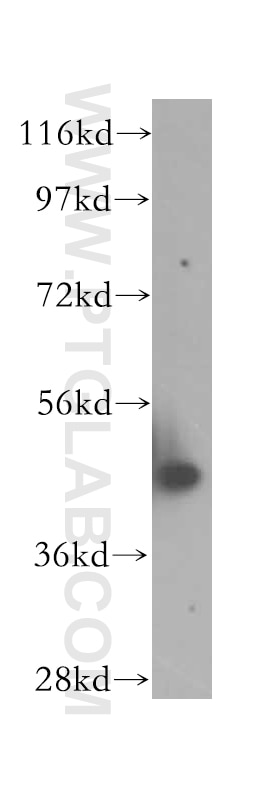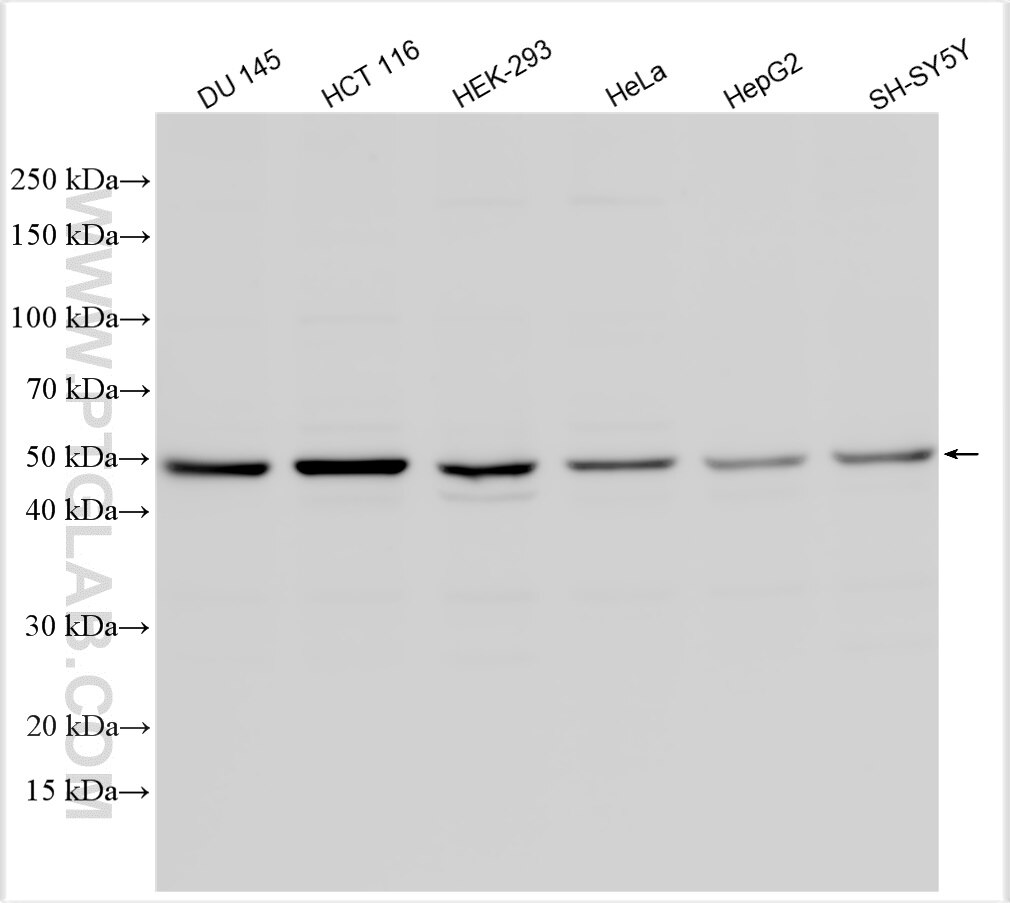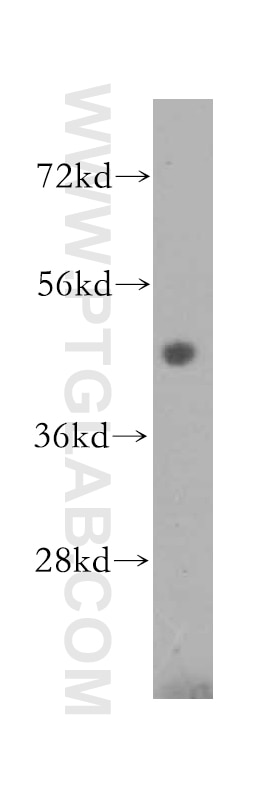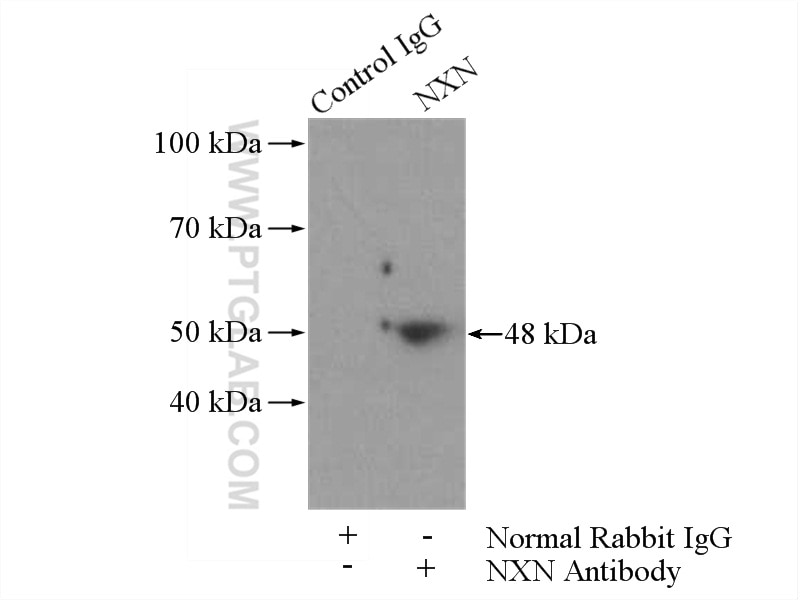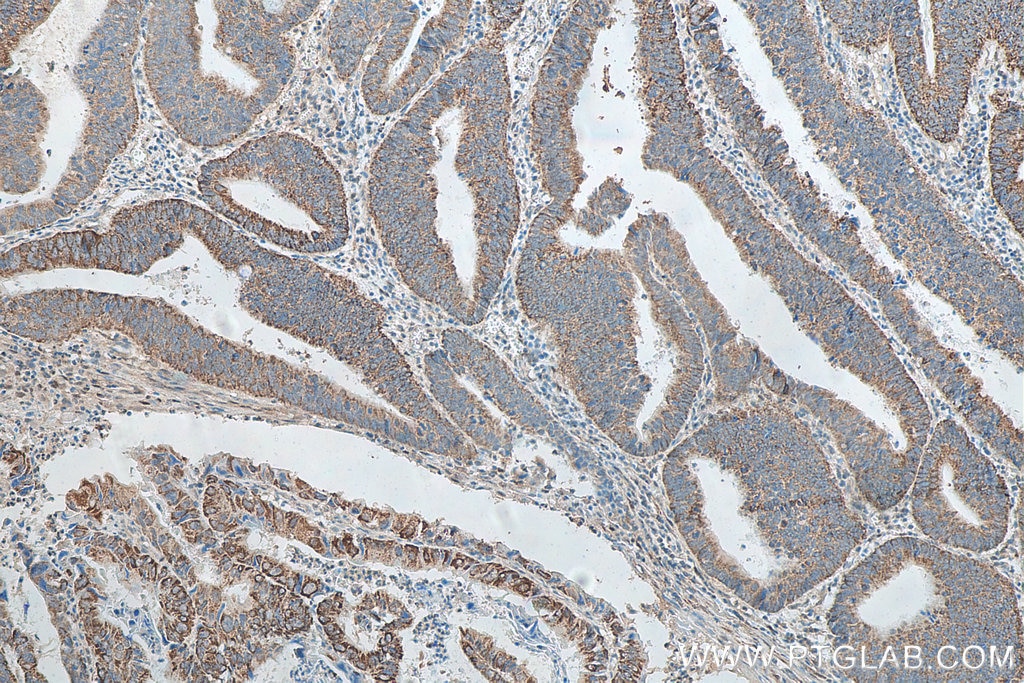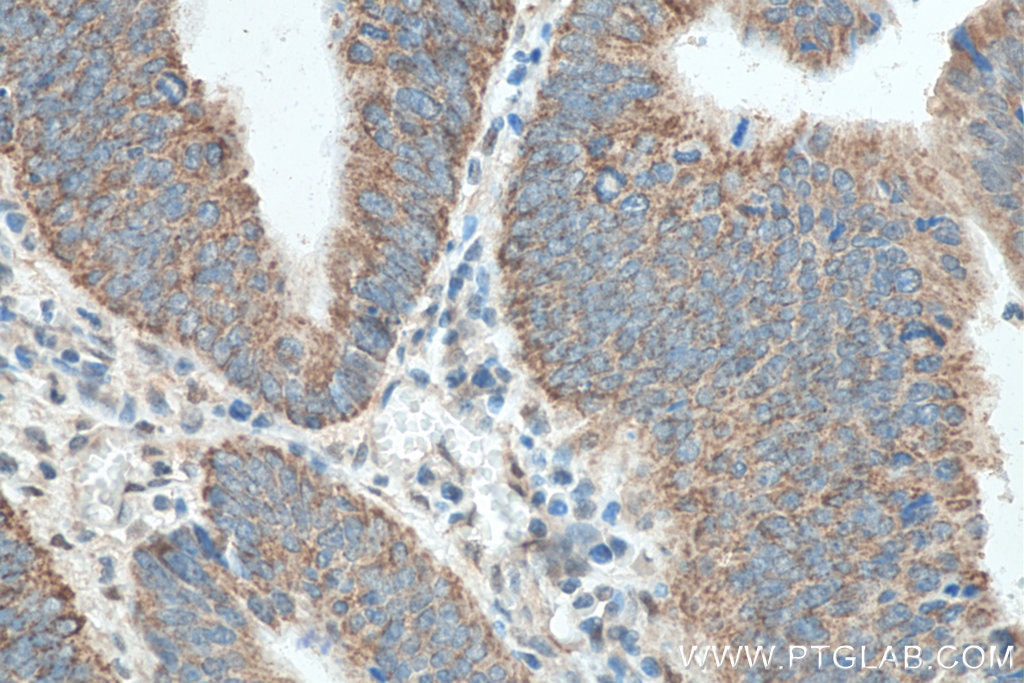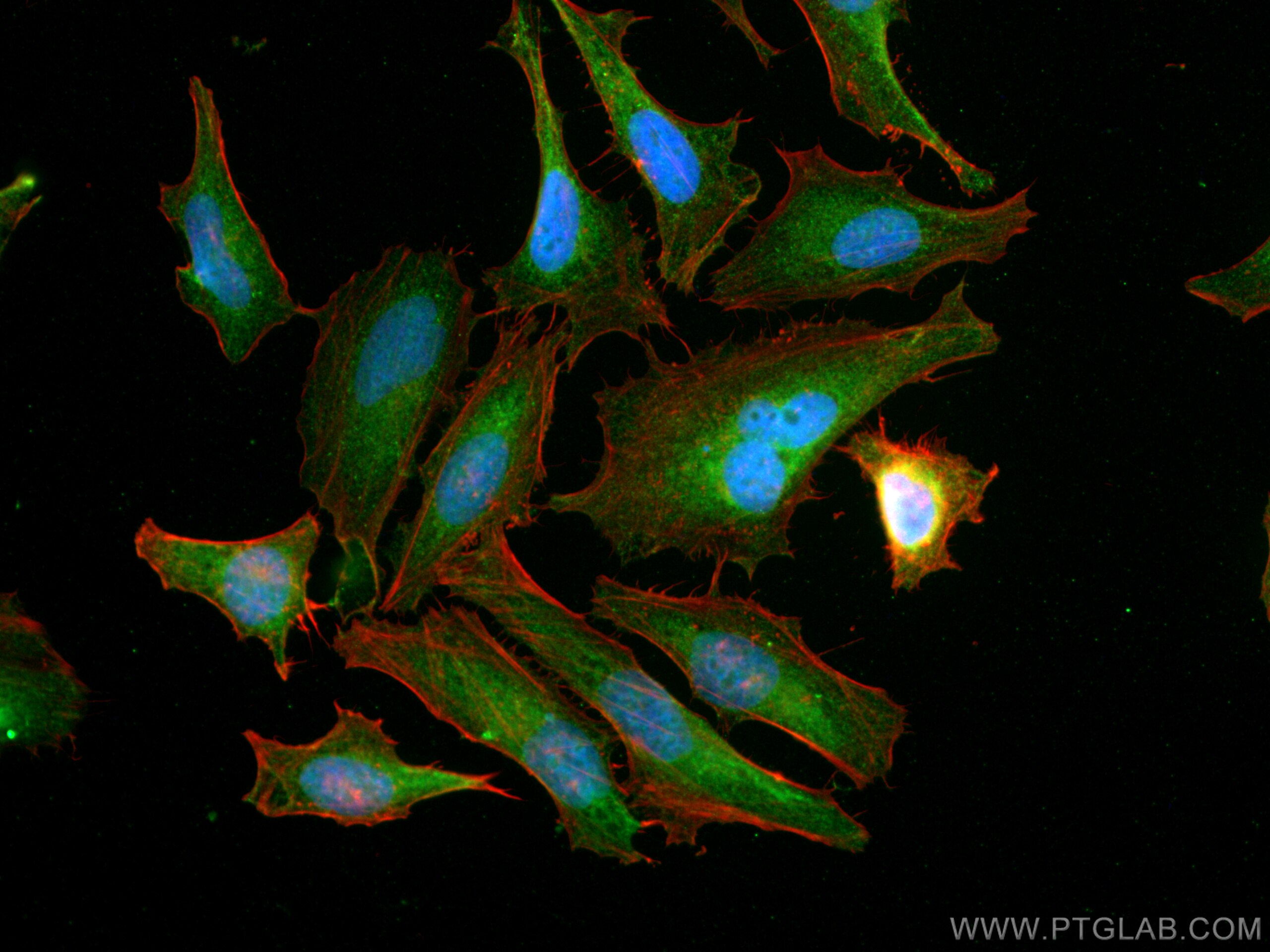- Phare
- Validé par KD/KO
Anticorps Polyclonal de lapin anti-NXN
NXN Polyclonal Antibody for WB, IP, IF, IHC, ELISA
Hôte / Isotype
Lapin / IgG
Réactivité testée
Humain, rat, souris
Applications
WB, IHC, IF/ICC, IP, ELISA
Conjugaison
Non conjugué
N° de cat : 16128-1-AP
Synonymes
Galerie de données de validation
Applications testées
| Résultats positifs en WB | cellules DU 145, cellules HCT 116, cellules HEK-293, cellules HeLa, cellules HepG2, cellules SH-SY5Y, tissu cardiaque humain |
| Résultats positifs en IP | cellules HeLa |
| Résultats positifs en IHC | tissu de cancer du côlon humain, il est suggéré de démasquer l'antigène avec un tampon de TE buffer pH 9.0; (*) À défaut, 'le démasquage de l'antigène peut être 'effectué avec un tampon citrate pH 6,0. |
| Résultats positifs en IF/ICC | cellules HeLa, |
Dilution recommandée
| Application | Dilution |
|---|---|
| Western Blot (WB) | WB : 1:1000-1:6000 |
| Immunoprécipitation (IP) | IP : 0.5-4.0 ug for 1.0-3.0 mg of total protein lysate |
| Immunohistochimie (IHC) | IHC : 1:50-1:500 |
| Immunofluorescence (IF)/ICC | IF/ICC : 1:50-1:500 |
| It is recommended that this reagent should be titrated in each testing system to obtain optimal results. | |
| Sample-dependent, check data in validation data gallery | |
Applications publiées
| KD/KO | See 1 publications below |
| WB | See 6 publications below |
| IHC | See 1 publications below |
| IF | See 1 publications below |
Informations sur le produit
16128-1-AP cible NXN dans les applications de WB, IHC, IF/ICC, IP, ELISA et montre une réactivité avec des échantillons Humain, rat, souris
| Réactivité | Humain, rat, souris |
| Réactivité citée | rat, Humain, souris |
| Hôte / Isotype | Lapin / IgG |
| Clonalité | Polyclonal |
| Type | Anticorps |
| Immunogène | NXN Protéine recombinante Ag9113 |
| Nom complet | nucleoredoxin |
| Masse moléculaire calculée | 435 aa, 48 kDa |
| Poids moléculaire observé | 48 kDa |
| Numéro d’acquisition GenBank | BC009327 |
| Symbole du gène | NXN |
| Identification du gène (NCBI) | 64359 |
| Conjugaison | Non conjugué |
| Forme | Liquide |
| Méthode de purification | Purification par affinité contre l'antigène |
| Tampon de stockage | PBS avec azoture de sodium à 0,02 % et glycérol à 50 % pH 7,3 |
| Conditions de stockage | Stocker à -20°C. Stable pendant un an après l'expédition. L'aliquotage n'est pas nécessaire pour le stockage à -20oC Les 20ul contiennent 0,1% de BSA. |
Informations générales
Nucleoredoxin (NRX/NXN), a relatively uncharacterized member of the TRX family protein, has recently been reported to regulate the Wnt/β-catenin pathway, which itself regulates cell fate and early development, in a redox-dependent manner(PMID:17567240). Northern blot analysis detected several nucleoredoxin splice variants in adult mouse tissues, with highest expression in testis and skin and lowest expression in liver(PMID:9119370). It has 3 isoforms produced by alternative splicing. This antibody is specific to NXN.
Protocole
| Product Specific Protocols | |
|---|---|
| WB protocol for NXN antibody 16128-1-AP | Download protocol |
| IHC protocol for NXN antibody 16128-1-AP | Download protocol |
| IF protocol for NXN antibody 16128-1-AP | Download protocol |
| IP protocol for NXN antibody 16128-1-AP | Download protocol |
| Standard Protocols | |
|---|---|
| Click here to view our Standard Protocols |
Publications
| Species | Application | Title |
|---|---|---|
Sci Signal Mitochondrial reactive oxygen species promote epidermal differentiation and hair follicle development. | ||
Free Radic Biol Med Oxidative stress as a candidate mechanism for accelerated neuroectodermal differentiation due to trisomy 21. | ||
FASEB J A crucial role for Nox 1 in redox-dependent regulation of Wnt-β-catenin signaling. | ||
Antioxidants (Basel) Enzymatic Depletion of Mitochondrial Inorganic Polyphosphate (polyP) Increases the Generation of Reactive Oxygen Species (ROS) and the Activity of the Pentose Phosphate Pathway (PPP) in Mammalian Cells. | ||
Antioxidants (Basel) Nucleoredoxin Plays a Key Role in the Maintenance of Retinal Pigmented Epithelium Differentiation.
| ||
Cell Death Dis NXN suppresses metastasis of hepatocellular carcinoma by promoting degradation of Snail through binding to DUB3. |
